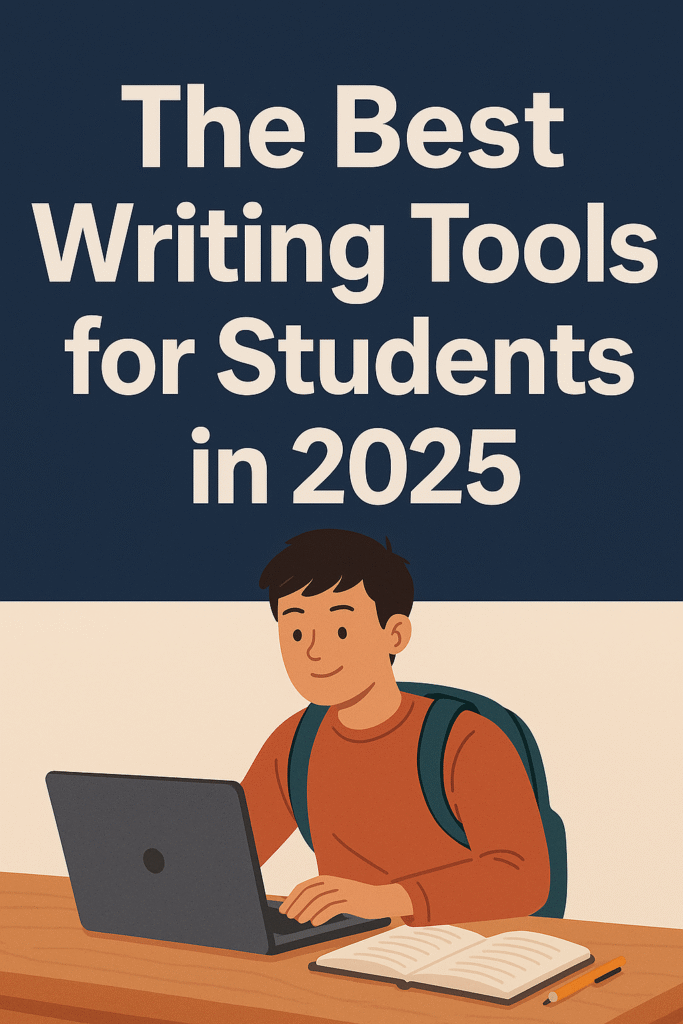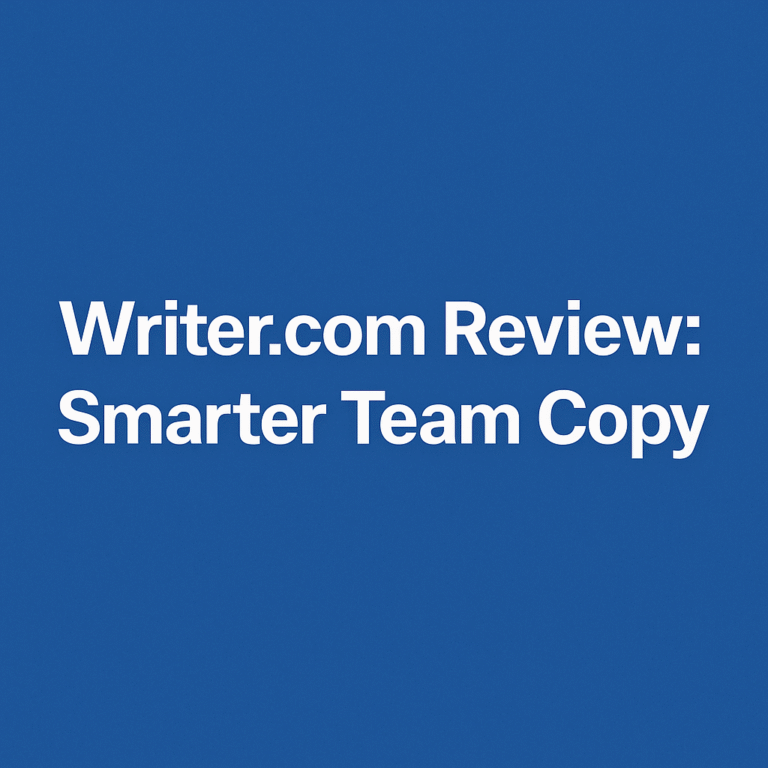
The Best Writing Tools for Students in 2025
In a world where assignments fly in faster than notifications and deadlines are always one tick away, the Best Writing Tools for Students in 2025 have become more than just digital helpers—they’re the quiet companions behind every A+ paper and perfectly structured thesis. These tools are not only about spelling checks or pretty fonts. They empower clarity, enhance structure, spark creativity, and reduce the time students waste on formatting or citation nightmares. Yes, even the dreaded bibliography is no longer a beast. So, whether you’re writing essays, planning research, or brainstorming your next big idea, this guide walks you through the ultimate tools every student should have on their radar this year.
Importance of Best Writing Tools for Students
Good writing tools are like academic superpowers—silent, sharp, and extremely useful. In 2025, when education is more digital than ever before, the pressure to communicate clearly is higher, and the attention span of both students and graders is shorter, having the right tool can make or break your academic success. These tools streamline the writing process, helping students focus on the content rather than struggling with format or structure. Whether you’re writing a 10-page report or typing out discussion board comments, having the right tech behind your words is a game-changer.
Types of Writing Tools: Digital Writing Tools That Matter
Modern writing tools can be categorized into apps for writing, editing, collaboration, research, idea organization, and even voice-to-text. From intuitive grammar checkers to AI-powered idea generators, the options are endless. Some are minimalist and distraction-free, while others offer robust features that rival professional software. Here’s the thing: no one-size-fits-all. Students can tailor their toolkit depending on whether they’re writing essays, research papers, journal entries, or creative pieces.
Traditional Writing Tools Still Have a Place
Despite the dominance of digital platforms, traditional tools like notebooks, colored pens, and index cards still serve their purpose. Bullet journals help track writing goals, while physical notebooks give a break from screens. Many students use a hybrid approach—outlining by hand and drafting digitally. It’s a balance between focus and flexibility.

Features to Look for in Best Writing Tools for Students in 2025
When shopping for or downloading a writing tool, students should consider:
- Ease of use
- Compatibility across devices
- Cloud syncing
- Grammar and style checking
- Research integration
- Citation generation
- Customizability (fonts, layout, themes)
Don’t just grab the flashiest app. The right tool should match your academic style like a glove.
Productivity Tools for Students: Tools That Save Hours
Productivity-focused writing tools like Notion, Evernote, and Obsidian help structure thoughts before the writing begins. With templates, reminders, calendar integration, and to-do lists, these tools make sure no idea slips through the cracks. When used smartly, they free up hours of planning time and cut procrastination in half.
Note-Taking Apps You’ll Actually Use
Note-taking is where every good paper begins. Tools like Microsoft OneNote, Apple Notes, and Google Keep have evolved to be more than just digital notepads. They now support voice memos, sketching, web clipping, and collaborative updates in real-time. In 2025, note-taking apps feel less like a diary and more like an AI-powered library that’s uniquely yours.
Grammar Checkers for Students Who Want to Sound Smarter
Tools like Grammarly, ProWritingAid, and Quillbot aren’t just grammar hawks—they coach you to write better. Grammarly, for example, now offers tone suggestions, clarity fixes, and full-sentence rewrites. These tools act like pocket professors correcting your rough drafts on the go, helping even non-native speakers write more confidently.

Writing Assistants for Students Pushed for Time
AI-powered tools like Jasper, Writesonic, and Rytr offer writing prompts, structure suggestions, and even full paragraph generation. Are they perfect? No. But for a student with writer’s block at midnight, they’re a lifesaver. You still need to edit and personalize—but they get the engine running.
Idea Organization Software to Tame the Chaos
Tools like MindMeister, XMind, and Coggle help structure messy thoughts into visual mind maps. Whether you’re outlining a novel or organizing a thesis argument, these apps let you map before you write. For visual thinkers, this step can dramatically improve coherence and creativity.
Collaborative Writing Tools for Group Projects
No more endless email chains. Platforms like Google Docs, Notion, and Zoho Writer enable real-time collaboration with teammates. Add comments, track changes, assign tasks—all in one document. In 2025, group projects no longer mean chaos (well, maybe just a little).
AI Tools for Writing That Think Ahead
AI is no longer the future; it’s the now. Tools like Sudowrite, ChatGPT, and Copy.ai are creating smart drafts, rewriting clunky phrases, and helping students brainstorm ideas. These tools are ethical assistants—if used wisely and transparently. They don’t replace learning, but they sure do lighten the mental load.
Mind Mapping Software That Organizes Without Stress
Need to connect your thesis to subtopics? Use Miro or Lucidchart. These tools provide visual clarity, giving you a bird’s-eye view of your entire argument. For big projects, this kind of visual structure is gold.
Citation Generators That Kill the Pain of Referencing
Forget memorizing APA or MLA styles. Tools like Zotero, CiteThisForMe, and EndNote automate citations with a single click. They also store sources, organize PDFs, and integrate directly with Word or Google Docs. Research writing becomes ten times easier—and cleaner.

Tools for Essay Writing That Feel Like Magic
From outline to conclusion, platforms like Hemingway Editor, Grammarly, and Scrivener help keep essays focused, concise, and readable. Scrivener, especially, is excellent for long-form writing, allowing students to write in chunks without losing sight of the big picture.
Mobile-Friendly Writing Apps for Students on the Go
Whether on the bus or between classes, apps like Ulysses, IA Writer, and JotterPad allow seamless mobile writing. They sync with cloud platforms and offer distraction-free writing modes, ideal for quick journaling or capturing sudden bursts of inspiration.
Editing Software for Students Who Want Polished Papers
Every good writer needs a good editor. Beyond grammar checkers, editing tools like PerfectIt and AutoCrit analyze flow, tone, and structure. Perfect for polishing assignments before submission, especially for ESL students or those with complex papers.
Writing Templates for Students That Save Hours
Templates from Canva Docs, Notion, and even Google Workspace offer ready-made formats for essays, reports, resumes, and more. Just plug in your content and go. Why reinvent the wheel when you can ride one that works?
Best Free Writing Tools That Don’t Skimp on Power
Free doesn’t mean cheap. Tools like LibreOffice, Google Docs, FocusWriter, and Zoho Writer provide powerful features without charging a dime. For budget-conscious students, these tools deliver performance that rivals paid alternatives.
Budget-Friendly Options for Students
Not every student has deep pockets. Look for tools offering:
- Free tiers with generous limits
- Student discounts
- Open-source alternatives
- Lifetime deals (vs. subscriptions)
Platforms like Scrivener, Notion, and Grammarly often have education pricing if you ask nicely—or show a student ID.
FAQs
What is the best grammar checker for students in 2025?
Grammarly remains a top choice due to its accuracy, tone suggestions, and user-friendly design.
Are AI writing tools safe for students to use?
Yes, when used ethically. AI tools help brainstorm and organize but shouldn’t replace original work.
What writing app is best for mobile devices?
IA Writer and Ulysses are highly rated for their clean interfaces and seamless syncing.
Which tool is ideal for mind mapping essays?
MindMeister and XMind are excellent for visually organizing complex topics.
Do free writing tools offer enough features for college students?
Absolutely. Many free tools like Google Docs or FocusWriter offer robust features suitable for most academic writing needs.
Can students use citation generators without plagiarism issues?
Yes, as long as they input accurate source data and follow formatting correctly, citation tools are 100% safe and encouraged.
Conclusion
The Best Writing Tools for Students in 2025 aren’t just fancy tech—they’re study partners, writing coaches, and stress relievers all rolled into one. Whether you’re writing your first college essay or your final dissertation, the right combination of tools will help you write smarter, not harder. In this fast-moving world of education, embracing digital writing assistants is no longer optional—it’s the competitive edge every student deserves.
So, choose your tools, sharpen your thoughts, and let your words do the magic.



